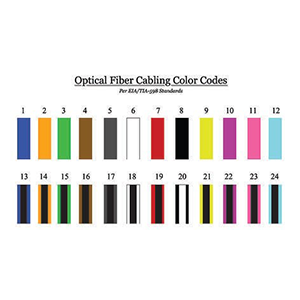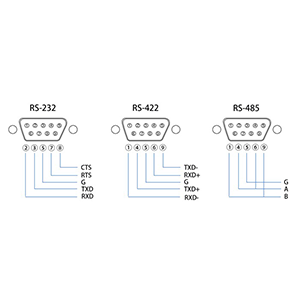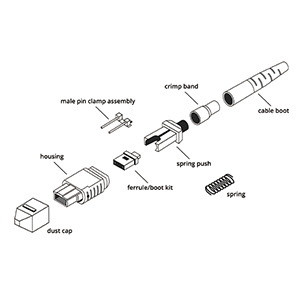Welcome to read the introduction about QSFP+ (Quad Small Form-factor Pluggable Plus) optical module! In this article, I will introduce you to the basic concepts and working principles of QSFP+ optical modules, and demonstrate it as a solution for high-speed data transmission needs. We will also discuss the application of QSFP+ optical modules in data center networks and storage systems, as well as its characteristics and advantages of high-speed transmission capabilities and high-density layout.
In addition, we will also introduce the technical standards and specifications of QSFP+ optical modules, including the structural characteristics of the optical module and the supported communication protocols. In terms of compatibility and interface types, we will discuss the compatibility of QSFP+ optical modules with other devices and network interfaces, and provide common interface type information.
Introduction to QSFP+ optical module
Definition and rationale:
QSFP+ (Quad Small Form-factor Pluggable Plus) optical module is a miniaturized optical communication module used to transmit high-speed data and signals. It is an upgraded version of the QSFP (Quad Small Form-factor Pluggable) optical module, providing higher transmission rates and greater bandwidth capacity.
QSFP+ optical modules use small-sized sockets and connectors to enable fast and reliable optical signal transmission between network equipment and optical fibers. It supports a variety of optical fiber transmission media, including single-mode fiber and multi-mode fiber, and different transmission distances.
In short, QSFP+ optical module, as a high-speed, high-bandwidth optical communication solution, can meet the data transmission rate and capacity requirements of modern networks. It is widely used in data centers, communication networks, supercomputing and other fields, promoting the development of efficient and reliable data transmission and communication technology.
Application fields of QSFP+ optical modules
Data center network:
QSFP+ optical modules are widely used in data center networks to meet high-density, high-bandwidth data transmission requirements. The following are the applications of QSFP+ optical modules in data center networks:
-
Server interconnection: In data centers, QSFP+ optical modules can be used for high-speed interconnection between servers. By using QSFP+ optical modules, data centers can achieve fast data transmission between servers and support applications such as high-performance computing, virtualization and cloud computing.
-
Network switch connection: QSFP+ optical modules can also be used for connections between data center network switches. It can provide high-bandwidth links, support large-scale data exchange and traffic management, and ensure the efficient operation of data center networks.
-
Cluster and distributed computing: For applications that require a large number of servers for cluster and distributed computing, QSFP+ optical modules can provide high-speed connections to achieve rapid data exchange and collaborative computing.
Storage System:
QSFP+ optical modules also play an important role in storage systems to meet the needs for large-capacity data storage and transmission. The following are the applications of QSFP+ optical modules in storage systems:
-
Storage network connection: QSFP+ optical modules can be used for storage network (SAN) connections to connect storage devices (such as disk arrays) and servers. It provides high-speed, reliable fiber-optic communication and supports the rapid transmission and storage of large-capacity data.
-
Storage expansion: For storage systems that need to expand storage capacity, QSFP+ optical modules can be used to connect expansion units or storage servers. It can provide high-bandwidth connections and support fast data transfer and storage expansion.
-
Storage copy and backup: During the process of data backup and recovery, QSFP+ optical modules can be used to connect storage devices to achieve high-speed data copy and backup operations.
Features and advantages of QSFP+ optical modules
High-speed transmission capability:
The QSFP+ optical module provides high-speed data transmission capabilities and supports multi-channel parallel transmission. It can achieve transmission rates of 40Gbps and 100Gbps, and even higher rates. By using multiple channels simultaneously, QSFP+ optical modules can provide greater bandwidth and throughput to meet the needs of modern networks for high-speed data transmission. This high-speed transmission capability makes QSFP+ optical modules an ideal choice for data centers, communication networks, and supercomputing.
High-density layout:
QSFP+ optical modules have the advantage of high-density layout and can achieve parallel transmission of more channels. It uses small-sized jacks and connectors to achieve high-density data transmission by integrating multiple channels into a single module. This means more channels and connections can be implemented within a given physical space, providing greater bandwidth capacity. The high-density layout makes QSFP+ optical modules a space-saving and resource-efficient choice for data centers and network equipment.
Through high-density layout, QSFP+ optical modules can provide more ports within the same size, reduce rack space occupation, and reduce the complexity of the data center. At the same time, high-density layout also helps reduce power consumption and heat dissipation requirements, and improves the energy efficiency and reliability of the system.
Technical standards and specifications of QSFP+ optical modules
Optical module structure:
QSFP+ optical module is a small optical fiber transmission module with the following structural characteristics:
-
Number of ports: QSFP+ optical modules usually have 4 independent optical fiber transmission channels, each channel supports high-speed data transmission. Each channel can work independently to achieve parallel transmission, thereby providing greater bandwidth.
-
Fiber type: QSFP+ optical module can use different types of optical fiber, including multi-mode fiber (MMF) and single-mode fiber (SMF). Multimode fiber is suitable for short-distance transmission, while single-mode fiber is suitable for long-distance transmission.
-
Power supply: QSFP+ optical modules can obtain power supply by inserting into the corresponding slot or port. Typically, they use the power interface in the module slot and make electrical and optical connections to the main device through the module slot.
letter of agreement:
QSFP+ optical modules support a variety of communication protocols, including but not limited to the following:
-
Ethernet: QSFP+ optical modules widely support Ethernet protocols, including Ethernet 1GbE, 10GbE, 40GbE and 100GbE, etc. They are suitable for high-speed data transmission in data centers and enterprise networks.
-
InfiniBand: QSFP+ optical module also supports InfiniBand protocol and is used in high-performance computing. They provide high-speed data transmission and low-latency communication to meet the needs of large-scale computing and data clusters.
-
Fiber Channel: QSFP+ optical module can support Fiber Channel protocol and is used for data transmission in storage networks and storage systems. They provide high-speed data transmission and reliable storage connections to meet the needs for large-capacity data storage and transmission.
In addition to the above communication protocols, QSFP+ optical modules can also support other protocols and standards, depending on the manufacturer and application requirements.
It should be noted that QSFP+ optical modules from different manufacturers may have different technical specifications and compatibility requirements. When selecting and using QSFP+ optical modules, it is recommended to refer to relevant technical specifications and manufacturer documentation to ensure compatibility with the target device and application environment.
Compatibility and interface types of QSFP+ optical modules
Compatibility points:
When considering the compatibility of QSFP+ optical modules, you need to pay attention to the following points:
-
Equipment compatibility: QSFP+ optical modules need to be compatible with other equipment (such as switches, routers, servers, etc.) to ensure normal data transmission and communication. When selecting a QSFP+ optical module, you need to confirm its compatibility with the target device, including hardware interface, electrical interface and communication protocol.
-
Network compatibility: QSFP+ optical modules need to be compatible with network infrastructure to achieve interconnection and data transmission with other devices. This includes compatibility of parameters such as fiber type, transmission distance, optical power and wavelength. Ensure that the QSFP+ optical module matches other optical modules and fiber optic infrastructure in the network to achieve reliable data transmission.
-
Standard compatibility: QSFP+ optical modules need to comply with relevant optical fiber transmission standards and technical specifications to ensure compatibility with other devices and modules that meet the same standards. Common standards include IEEE 802.3 Ethernet standard, InfiniBand standard and Fiber Channel standard.
Interface Type:
Common interface types of QSFP+ optical modules include:
-
LC interface: The LC interface is a common optical fiber connection interface used for single-mode optical fiber transmission. QSFP+ optical modules can use the LC-Duplex interface, where each channel has an LC connector for transmitting single-mode fiber.
-
MPO/MTP interface: MPO (multimode parallel optical fiber) or MTP (multimode transmission system) interface is a high-density connection interface used for multimode optical fiber transmission. QSFP+ optical modules can use MPO/MTP interfaces, where each channel is connected to an MPO/MTP connector.
-
QSFP28 interface: The QSFP28 interface is a high-speed, high-density connection interface used to support higher-speed data transmission. QSFP+ optical modules can use the QSFP28 interface to achieve a transmission rate of 100Gbps.
The appropriate interface type needs to be selected based on specific application needs and equipment requirements. At the same time, when selecting a QSFP+ optical module, you need to ensure that its interface type matches that of the target device and fiber optic infrastructure to achieve correct physical connection and compatibility.
Deployment and configuration of QSFP+ optical modules
Optical module installation:
The following is the general installation guide for QSFP+ optical modules:
-
Preparation: Make sure the target device is turned off and disconnected from the power source. Prepare the required QSFP+ optical modules and fiber optic cables.
-
Check the interface type: According to the interface type of the target device (such as LC, MPO, etc.), select the corresponding optical fiber cable and connector.
-
Connect the optical fiber: Insert one end of the optical fiber cable into the interface of the QSFP+ optical module and make sure the connection is tight.
-
Connect to the target device: Insert the other end of the optical fiber cable into the corresponding interface of the target device and ensure that the connection is tight.
-
Fix the optical module: Fix the QSFP+ optical module on the slot or port of the device according to the fixing method of the device (such as screws or buckles).
-
Power on and power on: Connect the target device to the power source and turn on the device following the device’s startup sequence and guidelines.
Please note that before proceeding with installation, be sure to refer to the relevant equipment and optical module installation guides and manuals to ensure correct and safe installation of the QSFP+ optical module.
Network Configuration:
The network configuration of QSFP+ optical module includes the following aspects:
-
Port configuration: Configure the port on the target device to enable normal communication with the QSFP+ optical module. This may involve configuring the port’s speed, operating mode, protocol, and other related parameters. Usually, the corresponding configuration options are provided by the device’s management interface or command line interface.
-
Transmission parameter adjustment: Depending on the actual network environment and transmission distance, the transmission parameters of the QSFP+ optical module may need to be adjusted. This includes adjustments to optical power, receiving sensitivity, attenuator settings and other parameters. Generally, the device’s management interface or command line interface provides corresponding configuration options.
-
Compatibility check: When configuring the QSFP+ optical module, a compatibility check is required to ensure its compatibility with the target device and other connected devices. This may involve verifying information such as the model, version, and technical specifications of the optical module and comparing it with the device’s compatibility list.
Before configuring the network, it is recommended to refer to the relevant documentation and guides of the device and optical module for detailed configuration steps and options. In addition, if you have specific network requirements or suggestions, you can consult the device manufacturer or network engineer for more professional configuration suggestions.
Future development of QSFP+ optical modules
As a key component of high-density, high-rate optical fiber transmission, QSFP+ optical modules will continue to develop towards higher transmission rates and wider application fields in the future. The following are some future development trends of QSFP+ optical modules:
-
Higher transmission rates: As data center and network demands continue to grow, so does the need for higher transmission rates. Currently, the transmission rates of QSFP+ optical modules are mainly 40Gbps and 56Gbps, but higher rates are expected to be achieved in the future, such as 100Gbps, 200Gbps or even 400Gbps. This will provide greater bandwidth and higher data transfer capabilities to meet growing data demands.
-
Higher integration: As technology advances, QSFP+ optical modules may achieve higher port density in smaller sizes. This will allow more fiber to be connected in a limited space and provide greater scalability and flexibility.
-
Compatibility of multi-mode and single-mode optical fibers: QSFP+ optical modules may be better compatible with multi-mode and single-mode optical fibers in the future. This will enable the use of QSFP+ optical modules in different optical fiber transmission environments, providing a wider range of applications and greater compatibility.
-
Open standards and ecosystems: In the future, more open standards and ecosystems may emerge to promote the development and application of QSFP+ optical modules. This will allow optical modules from different manufacturers to better interoperate and provide more choices and flexibility.
-
Application field expansion: QSFP+ optical modules have been widely used in data centers, cloud computing, super computing and other fields. In the future, with the development of emerging technologies, such as 5G, Internet of Things and artificial intelligence, QSFP+ optical modules may be used in more application scenarios, including communication networks, edge computing and high-performance computing.
Summarize:
Thank you for reading the introduction about QSFP+ optical modules. As a high-speed data transmission solution, QSFP+ optical module has a wide range of applications. In terms of data center network, it supports high-density and high-bandwidth data transmission, meeting the data center’s needs for high-speed data processing and transmission.
In the field of storage systems, QSFP+ optical modules also play an important role, meeting the demand for large-capacity data storage and transmission. QSFP+ optical modules have high-speed transmission capabilities and support multi-channel parallel transmission, such as 40Gbps and 100Gbps rates. Through high-density layout, it achieves parallel transmission of more channels and improves data transmission efficiency.
In the future, QSFP+ optical modules are expected to continue to develop, achieve higher transmission rates, and play an important role in a wider range of application fields. If you have any further questions about QSFP+ optical modules or want to know more information, please continue to follow GracyFiber Company.we will be happy to assist you. Thanks!
- Is QSFP optical?
- Is QSFP+ the same as QSFP28?
- Can I plug QSFP+ into QSFP28?
- How many fibers are in QSFP+?
- Is QSFP+ compatible with SFP+?
- What is the maximum speed of QSFP+?
- How many fibers are in fiber optic cable?
- What is the difference between SFP and QSFP+?
- What is the difference between QSFP 28 and QSFP+?
-
40G QSFP BIDI RX 850nm 100m Module Receiver Only
-
40G QSFP PSM 1310nm 2km Transceiver Module
-
40G QSFP+ 1310nm 40km lc Transceiver Module
-
40G QSFP+ BIDI 850nm 100m Transceiver Module
-
40G QSFP+ CSR4 MTP Optical Transceiver Module
-
40G QSFP+ cwdm4 1310nm 2km Transceiver Module
-
40G QSFP+ DWDM 1559nm 80km Transceiver Module
-
40G QSFP+ LWDM 80km lc Transceiver Module
-
40G QSFP+ PSM 1310nm 10km Transceiver Module




